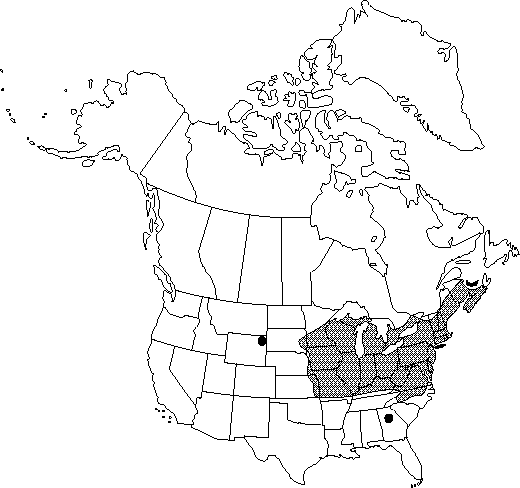Berberis thunbergii
Syst. Nat. 2: 19. 1821.
Shrubs, deciduous, 0.3-3 m. Stems dimorphic, with short axillary shoots. Bark of 2d-year stems purple or brown, glabrous. Bud-scales 1-2 mm, deciduous. Spines present, simple or 3-fid. Leaves simple; petioles 0-0.8 cm. Leaf-blade obovate to spatulate, 1-veined from base, (0.5-) 1.2-2.4 × 0.3-1 (-1.8) cm, thin and flexible, base long-attenuate, margins plane, entire, apex rounded or obtuse; surfaces abaxially dull, smooth, adaxially dull, scarcely glaucous. Inflorescences umbellate, 1-5-flowered, 1-1.5 cm; bracteoles membranous, apex acute. Flowers: anther-filaments without distal pair of recurved lateral teeth. Berries red, ellipsoid or spheric, (7-) 9-10 mm, juicy, solid.
Phenology: Flowering late winter–spring (Mar–May).
Habitat: Woods, old fields, roadsides
Elevation: 0-1300 m
Distribution

Introduced; N.B., N.S., Ont., P.E.I., Conn., Del., Ga., Ill., Ind., Iowa, Kans., Ky., Maine, Md., Mass., Mich., Minn., Mo., Nebr., N.H., N.J., N.Y., N.C., Ohio, Pa., S.Dak., Vt., Va., W.Va., Wis., Wyo., native, Asia (Japan)
Discussion
The U.S. Department of Agriculture lists Berberis thunbergii as resistant to infection by Puccinia graminis, and the species is widely grown as an ornamental in the United States. Preliminary tests carried out by Agriculture Canada, however, suggest that some strains may be susceptible to Puccinia graminis infection, and cultivation of B. thunbergii is illegal in Canada.
Selected References
None.